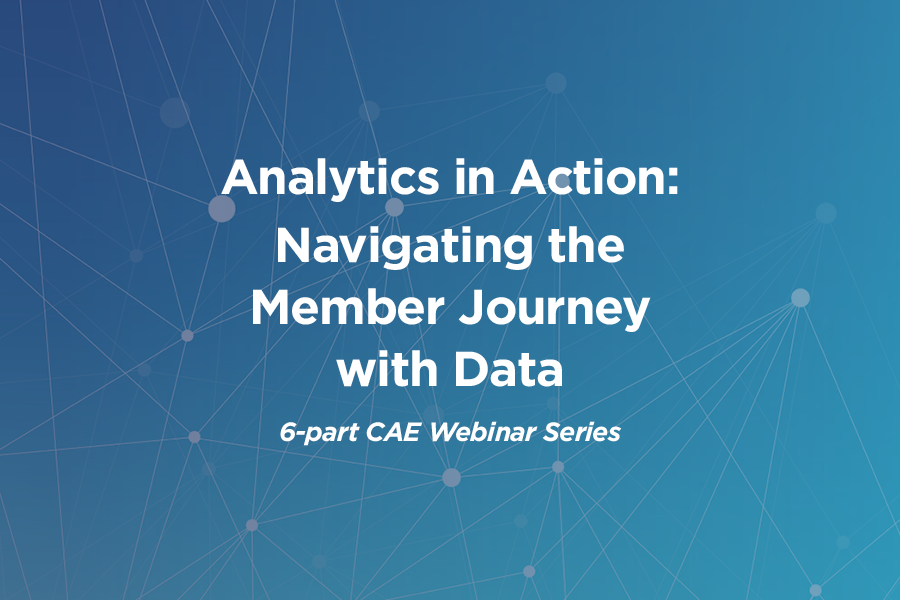It’s no secret that growing membership is hard. When you’re working with limited resources it can be a struggle to both get new people in the door and then keep them there once you do.
Not surprisingly, a 2020 report from Wild Apricot showed that 68% of organizations have difficulty growing membership. What’s slowing these association’s down? Besides facing competition from free online sources of continuing education and mentorship, it can also be a challenge for associations to communicate their value, especially when it comes to younger generations.
Yet, today’s consumers are no stranger to the membership model. Subscriptions to everything from television to meals to razor blades are a booming business. Signing up for a membership is not something today’s professionals shy away from, so it’s critical for today’s associations to discover how to get in front of their target market and successfully communicate their value.
Getting in front of target buyers and communicating value happen to be two of the main principles of the common sales process. In this blog, we outline how you can use the same framework to improve new member acquisition at your association.
Step 1: Build the top of your funnel
SImply put, building the top of the funnel means participating in activities designed to create awareness about your association. Top of funnel outreach includes channels like social media, newsletters, and blogs that are designed to establish credibility.
In a standard sales funnel, you want to focus on engaging and nurturing leads down the funnel to the bottom, which is where they’d convert to membership. The key is being deliberate about the types of prospects you’re trying to reach and processes you’re using to try to convert them into new members.
So how can you build the top of your membership sales funnel?
- Target new audiences – We focus on member experience, satisfaction, and retention, but what about the more tangential groups we touch as an organization? These groups can include partners, contributors, affiliates, event attendees, learners, and more – and they can be a great source for new members. While membership may not make sense for some of these constituent groups, some are strong prospects to convert to membership that are often ignored.
- Expand the membership pool – Are there folks that might fit into a different type of membership at your association that doesn’t currently exist? There may be groups including business partners, non-certified professionals and affiliates who could greatly benefit from being a member of your association but aren’t currently eligible. By adding a new membership type, you can create an entirely new audience and potential member base for your association.
When it comes to building awareness for your association, you may not have to look too far, starting with your email list. The people on your list are likely not all members but they signed up for a reason. Finding out what they value, what they need and being able to deliver that is key to turning them into members.
Other methods of expanding your visibility include social media campaigns, events, career fairs, and using search engine optimization (SEO) to attract people to your website.
Once you invest in some of these strategies, it’s important to track what works to engage with potential members. You can track metrics that will help you identify what’s working, including social media engagement, impressions and reach, database growth, event registration and attendance, and website visits and sessions.
Looking to create even more value for your association in the industry? Don’t discount thought leadership for the top of funnel audiences. Most associations have a strategic objective that can position them as the go-to resource for people in their profession. Associations can build thought leadership through blogs, white papers, publications, and appearances on webinars and podcasts.
One example of thought leadership is this blog! Association Analytics also hosts a webinar series, Navigating the Member Journey Using Data, to helpassociations better understand how their data can help transform their association. (You can sign up here for upcoming webinars or watch on-demand recordings of past sessions).
Again, remember to measure the results of these thought leadership efforts by measuring the engagement with the resources you produce. Registrations, subscriptions, downloads, clicks and page conversions are all reliable ways to determine what audiences are finding valuable.
Step 2: Engage and nurture your audience
As you’re considering your potential members’ journeys through your funnel, it’s important to think through the different stages they will go through and all the different touchpoints they might encounter along their way.
You want to provide the most relevant and engaging resources, content and events, at just the right time, so you keep them moving through their journey. But in order to do that, you have to think about what you’ll do to engage them and how you’ll measure it ahead of time.
For example, you can’t discuss what type of follow-up you want to do with the non-members who attended your conference after the event has happened. To move your prospects to that next stage in their journey, think about all your touchpoints beforehand. Will you send them additional content resources? Ask them to sign up for a new learning course? Or offer them a discount on membership?
Plan ahead, so you’ll know what data to track. Then you’ll be able to see what works, and what doesn’t so you can focus on what really moves the needle.
As you’re planning out potential customer journeys to membership, keep in mind that it should be a process full of give and take interactions. You might begin with engagement through a piece of content, which leads to that person identifying themself as part of one of your communities. Next, you might get them to buy something, and then ultimately you get them to convert to membership.
Along the way, a new prospect should be able to try out some of your resources and services, ideally building value to the point that they are convinced that a membership with your association is a worthy investment.
It can feel overwhelming to think about the amount of work needed to keep potential members moving through your funnel, but thankfully there are helpful automation tools that take a lot of the manual work out of this process. Using automation tools, you can approach people in a methodical way that doesn’t burn them out, but also make sure you’re top of mind for them.
Some common methods to engage and nurture potential members include articles, testimonials, email and newsletters. Similar to the tactics you used to get folks into the funnel, you’ll want to measure your effectiveness, using metrics like page visits, downloads, event and course registrations, webinar attendance or email click rates.
When it comes to judging what works, A/B testing – also called split testing or bucket testing – can help you compare the performance of two versions of content to see which one appeals more to viewers. Compare different types of content, subject lines, button colors and more, iterating along the way to refine your message and process.
Step 3: Convert your audience into members
Once you’ve focused on doing things that work to move prospects down your membership sales funnel, it’s time to convert them into new members!
Some common ways to convert new members are through membership applications, landing pages and whitepaper downloads with events set up and tracked via Google Analytics 4 (GA4). Keep an eye on what leads to conversion. How are these folks getting to your website? Was it through social media traffic or email clicks? Does a specific call-to-action phrase work better than others (like “Join Now” versus “Sign Up to be a Member”)? Knowing this data can help you to continue to refine the sales process for new members in the future.
Continue The Journey into Membership
When it comes to new members, it is often harder to acquire them than it is to keep them so once they join, remember that engagement and nurturing shouldn’t stop.
Even if you’re using technology tools, the human touch is an invaluable tool. Members who feel welcomed and valued upfront will recognize the value of their investment, continue to engage with your association – and maybe even tell a friend. To learn more about this topic, watch our on-demand webinar – Using Your Data to Improve Member Engagement.
Want to learn more about how we help associations successfully leverage data to grow their membership? Contact us at any time to speak with one of our data-loving experts.





